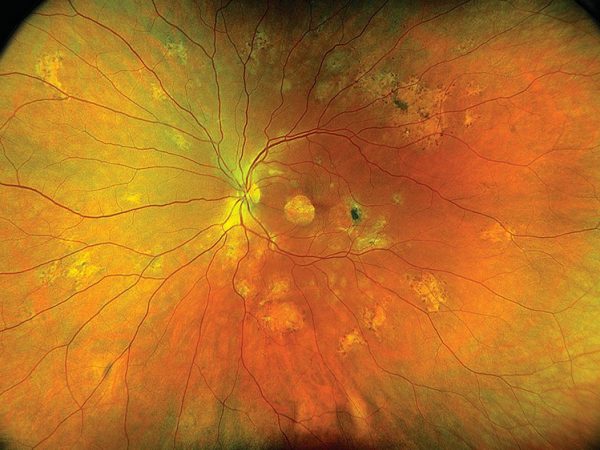
Understanding and Managing Dry Eyes: Causes, Symptoms, and Treatments
Dry eyes are a common and often chronic condition that affects millions of people worldwide. The discomfort associated with dry eyes can range from mild irritation to significant pain, and it can greatly impact your quality of life. At eyeXam, your trusted optometry practice in Newport Beach, CA, we are dedicated to helping you understand and manage dry eyes effectively. In this article, we’ll explore the causes, symptoms, and treatment options for dry eyes, so you can find relief and maintain optimal eye health.
What Are Dry Eyes?
Dry eyes occur when your eyes do not produce enough tears, or when the tears produced are of poor quality. Tears are essential for maintaining the health of the front surface of the eye and for providing clear vision. They are composed of three layers: the oily layer, the watery layer, and the mucus layer. Each of these layers plays a vital role in keeping the surface of your eye smooth, clear, and free from irritation.
When the tear production is insufficient or the tears evaporate too quickly, it can lead to dryness and inflammation of the eye’s surface, resulting in the condition known as dry eye syndrome.
Causes of Dry Eyes
There are numerous factors that can contribute to dry eyes, and understanding these causes is the first step in managing the condition effectively. Some of the most common causes include:
- Aging
- As we age, tear production tends to decrease naturally. This is why dry eyes are more common in individuals over the age of 50.
- Environmental Factors
- Dry, windy, or smoky environments can cause tears to evaporate more quickly, leading to dry eyes. Prolonged exposure to air conditioning or heating can also exacerbate the problem.
- Prolonged Screen Time
- Spending long hours staring at computer screens, smartphones, or tablets can reduce blink rates, leading to decreased tear production and dry eyes.
- Contact Lens Use
- Wearing contact lenses can disrupt the natural tear film and cause or worsen dry eyes, particularly if worn for extended periods or without proper care.
- Medications
- Certain medications, such as antihistamines, decongestants, antidepressants, and blood pressure medications, can reduce tear production and lead to dry eyes.
- Hormonal Changes
- Hormonal changes, particularly in women during pregnancy, menopause, or while taking birth control pills, can affect tear production and lead to dry eyes.
- Underlying Medical Conditions
- Conditions such as diabetes, rheumatoid arthritis, Sjogren’s syndrome, and thyroid disorders can interfere with tear production and contribute to dry eyes.
- Eye Surgery
- Certain eye surgeries, including LASIK and cataract surgery, can disrupt the tear film and lead to temporary or chronic dry eyes.
Symptoms of Dry Eyes
The symptoms of dry eyes can vary from person to person and may range from mild to severe. Common symptoms include:
- A Stinging or Burning Sensation
- Many individuals with dry eyes report a persistent stinging or burning feeling in their eyes.
- Redness
- Dry eyes can cause the whites of the eyes to appear red and irritated.
- Sensitivity to Light
- Bright lights may cause discomfort or pain for those with dry eyes.
- Blurred Vision
- Fluctuating or blurred vision is a common symptom, particularly after prolonged use of screens or reading.
- Foreign Body Sensation
- Some people with dry eyes feel as though there is something gritty or sandy in their eyes.
- Difficulty Wearing Contact Lenses
- Dry eyes can make it uncomfortable or even painful to wear contact lenses.
- Excessive Tearing
- Paradoxically, dry eyes can sometimes lead to excessive tearing as the eyes try to compensate for the dryness. However, these tears are often of poor quality and do not adequately lubricate the eyes.
- Eye Fatigue
- Eyes may feel tired or heavy, especially after prolonged use.
Diagnosing Dry Eyes
If you suspect you have dry eyes, it’s important to see an optometrist for a comprehensive eye exam. At eyeXam, we use advanced diagnostic tools and techniques to assess the quality and quantity of your tears and to determine the underlying cause of your dry eyes. Some of the tests that may be performed include:
- Schirmer’s Test
- This test measures tear production by placing a small strip of paper under the lower eyelid. The amount of moisture on the strip after a few minutes can indicate if your tear production is insufficient.
- Tear Break-Up Time (TBUT)
- This test evaluates how long it takes for your tears to evaporate after a blink. A shorter time may indicate poor tear quality or evaporation issues.
- Ocular Surface Staining
- Special dyes, such as fluorescein or lissamine green, may be used to highlight damage to the eye’s surface caused by dryness.
Treatment Options for Dry Eyes
The treatment for dry eyes depends on the underlying cause and the severity of the condition. At eyeXam, we offer a variety of treatment options to help manage and alleviate the symptoms of dry eyes.
- Artificial Tears
- Over-the-counter artificial tears are often the first line of treatment for mild dry eyes. These lubricating eye drops can help supplement your natural tears and provide temporary relief from dryness.
- Prescription Eye Drops
- For more severe cases of dry eyes, prescription eye drops such as cyclosporine (Restasis) or lifitegrast (Xiidra) may be recommended. These medications help increase tear production and reduce inflammation.
- Punctal Plugs
- Punctal plugs are tiny devices inserted into the tear ducts to block drainage, helping to retain moisture on the eye’s surface. This treatment is often used for moderate to severe dry eyes.
- Lifestyle and Environmental Modifications
- Making simple changes to your environment and daily routine can help manage dry eyes. This may include using a humidifier, taking regular breaks from screen time, and wearing wraparound sunglasses to protect your eyes from wind and dry air.
- Eyelid Hygiene
- Maintaining good eyelid hygiene can help manage dry eyes, especially if they are related to conditions such as blepharitis or meibomian gland dysfunction. Regularly cleaning the eyelids with warm compresses or using medicated wipes can help keep the tear-producing glands functioning properly.
- Omega-3 Fatty Acids
- Studies have shown that omega-3 fatty acids, found in fish oil and flaxseed oil, can help improve the quality of tears and reduce symptoms of dry eyes. Supplements or a diet rich in omega-3s may be recommended as part of your treatment plan.
- Specialty Contact Lenses
- For those who prefer contact lenses, specialty lenses such as scleral lenses can help alleviate dry eyes by creating a moisture-rich environment for the eyes.
- Intense Pulsed Light (IPL) Therapy
- IPL therapy is a newer treatment option for dry eyes, particularly for those with meibomian gland dysfunction. This non-invasive procedure uses light pulses to improve the function of the oil-producing glands in the eyelids.
Dry Eye Treatment in Newport Beach, CA
Dry eyes can be a frustrating and uncomfortable condition, but with the right diagnosis and treatment, it can be managed effectively. At eyeXam in Newport Beach, we are committed to providing personalized care and comprehensive dry eye treatment options for dry eyes. If you are experiencing symptoms of dry eyes, we encourage you to schedule an appointment with our team. We will work with you to develop a treatment plan tailored to your specific needs, helping you find relief and maintain optimal eye health.





